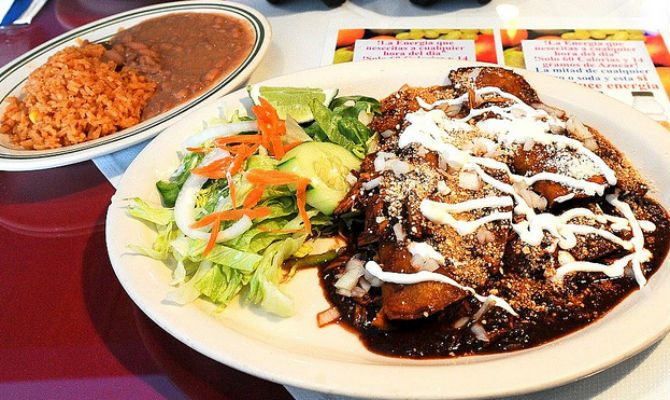How "Mexican Food" Is Different In Mexico
Beef burritos, nachos, cheese dip, and fajitas are often on the brain when one suggests going out for Mexican food. But calling it that is incorrect in and of itself – authentic Mexican food almost never incorporates ingredients like beef, cheddar cheese, black beans, and wheat flour.
The history of Tex-Mex cuisine is as convoluted as that of Texas because Texas and Mexico were both part of the Spanish colony called New Spain for over 300 years. Texas separated from Spain in 1821 but maintained ties with Mexico until Texas became one of the United States in 1845. According to Thrillist, settlers came to Texas and experienced the relatively nearby Mexican cuisine for the first time. Appreciation for the food grew and people started to make it with common Texan ingredients like wheat flour and beef scarcely found south of the border. Tejanos, or people of Mexican descent living in Texas, furthered the popularity of Tex-Mex with recipes from their own kitchens, and San Antonio in the 1880s saw "chili con carne" grow in popularity as it was sold in community plazas by a group of women called the "chili queens." The dish was sold at the 1893 Chicago World's Fair and seven years later, Tex-Mex restauranteur Otis Farnsworth became the father of the modern-day combination plate, choosing to serve an entrée with rice and beans as sides. Nachos were born around 50 years later, and the rest is history.
Hard-shell tacos are also scarce in Mexico – soft-shell tacos with steamed or lightly grilled tortillas are much more the norm. Limes, onions, cilantro, and fresh white cheese usually appear in authentic Mexican tacos, and true Mexican salsa is called pico de gallo, a combination of fresh tomatoes, cilantro, and onions. You won't find wheat tortillas down south, and instead of fajitas, try an authentic dish like shredded beef with lime and avocado. Flan and pastel de tres leches, or three milk cake, are two authentic Mexican desserts.
There's Tex-Mex, and there's authentic Mexican food, but the former couldn't exist without the latter. It's been Americanized and served with melted cheese, but the popular cuisine's roots will always be south of the border.
